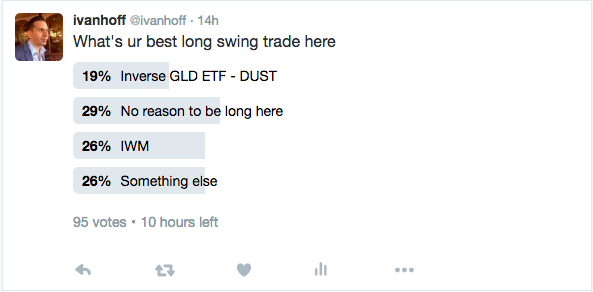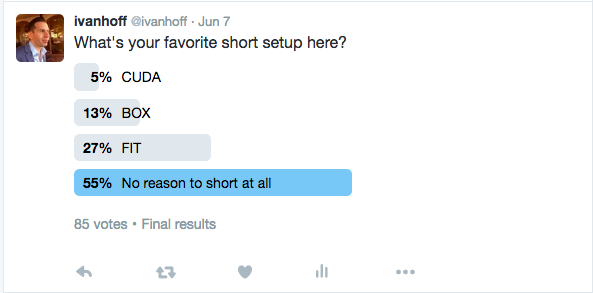People like to compare trading with poker. They have a lot in common. Both deal with probabilities. Both accept that there is never 100% certainty. What matters most is risk and reward over time. Statistics, pattern recognition, cognitive psychology, and studying past wins and losses is extremely useful in both games.
In both disciplines, psychology matters more than fundamentals. In poker, you might win with a weaker combination of cards than your opponents if you manage to convince them that you hold something strong. In trading, a current sentiment often overrules underlying fundamentals in short-term perspective – a stock with high short interest could double and squeeze short sellers out of the game before it ultimately reverses lower and head near zero.
In both games, participants operate with a different time frame in mind. Some poker players might be willing to create an illusion that they like to bluff. They could intentionally lose a few small bets early in the game, so they could win big later in the game. In trading, some people operate intraday, others are swing traders, market makers, value investors, etc.
There are many similarities, but they are also two very different games.
Poker is a zero-sum game. Every dollar won by one is lost by another. Trading/investing might be a zero-sum game, but it is not. Markets often rotate periods when almost everyone is a winner with periods when almost everyone is a loser.
In poker, you know exactly what is the probability of having a winning combination of cards. In trading, the probability of a setup being profitable and its potential reward to risk could vary significantly based on the market environment. For example, a breakout setup has a much higher likelihood of making more money in a strong general market that is rising above all its major moving averages – 10, 20, 50 and 200-day. The same setup is prone to failure or delivering much smaller profits in a declining market that is falling below all it major moving averages.
Professional poker players know the exact risk and potential reward for each bet. They are willing to take a bet with 20% probability to win if the potential reward is let’s say ten times their risk. They accept that with a 20% probability to win, they will lose four out of five times. The one out of five times they win will more than compensate for their losses.
In trading, taking setups when they have a much lower probability of delivering leads to overtrading, deep drawdowns and eventually to frustration and loss of confidence. This could lead to second-guessing a setup and under-trading when a more accommodating market environment comes around.
In poker, you are dealt one hand. You don’t get to choose. In trading, you could choose to play whatever setup you want. You could buy breakouts when they are more likely to work and deliver bigger profits. You could use a different setup or stay on the sidelines when the market environment is not favorable for buying strength.






